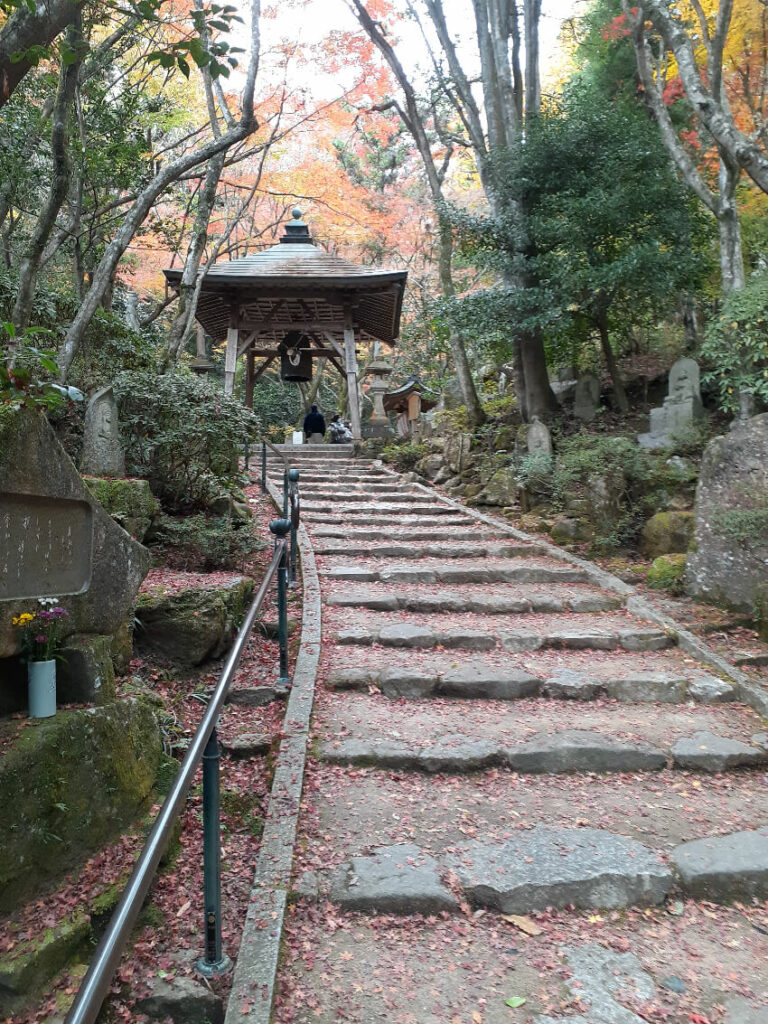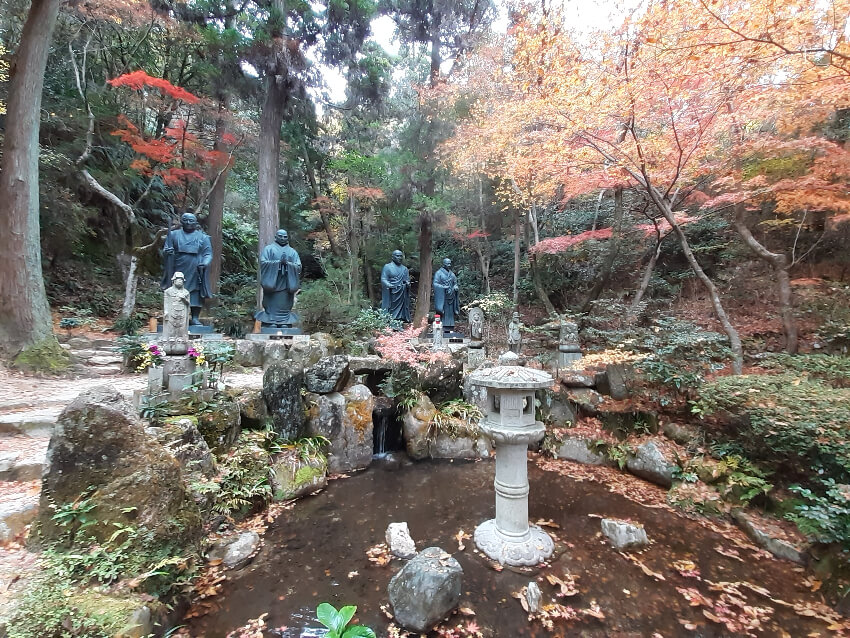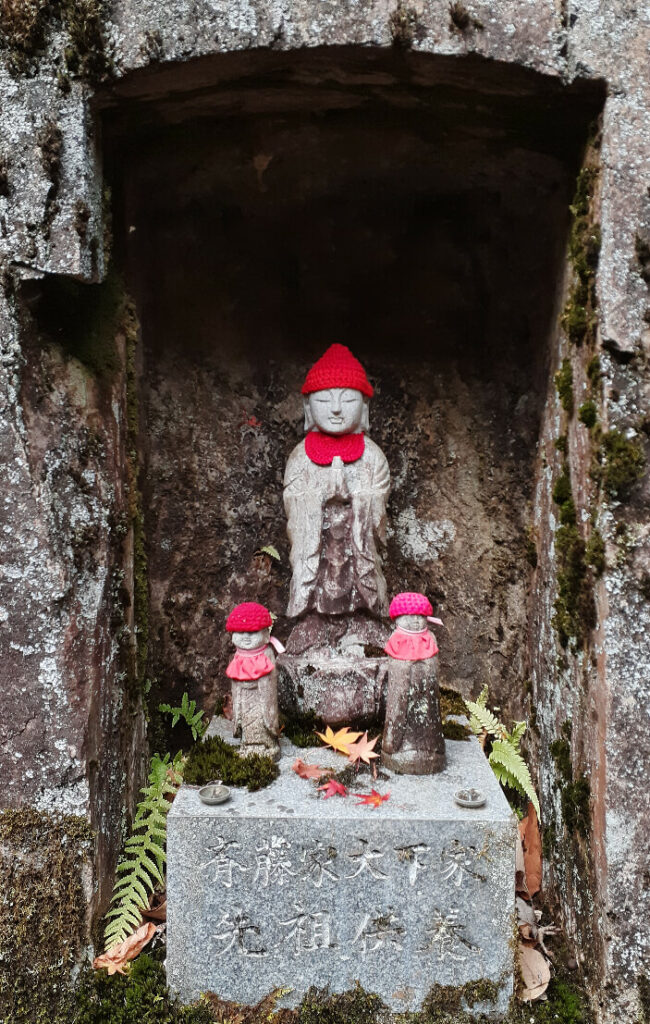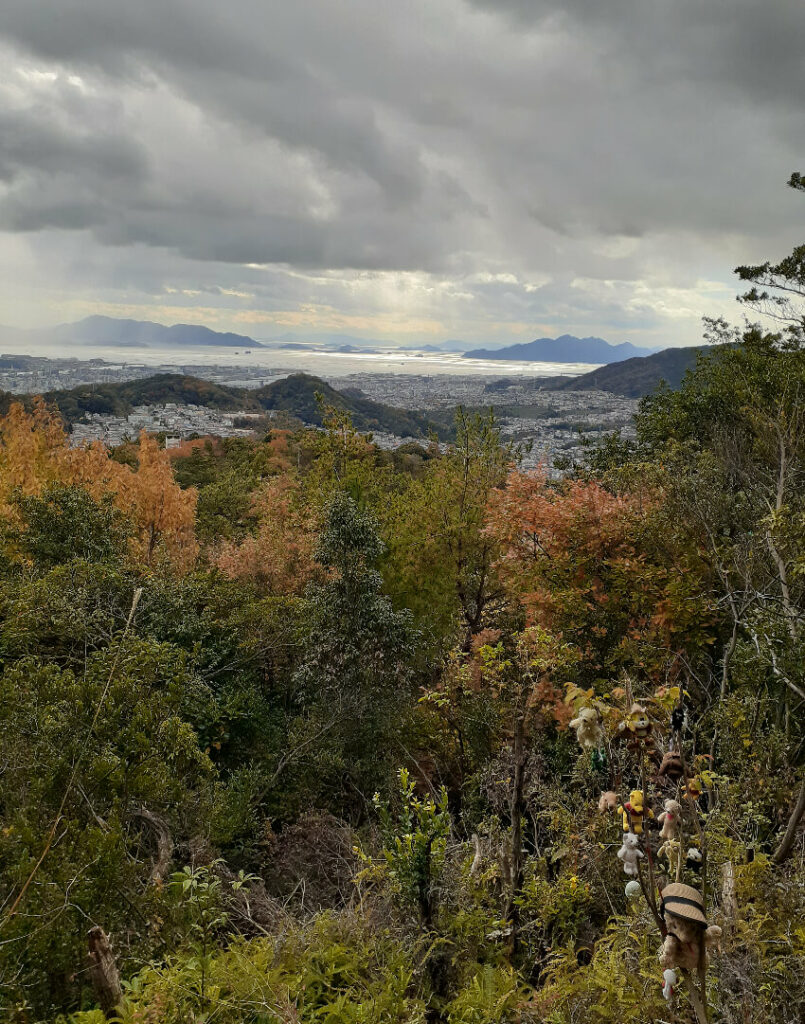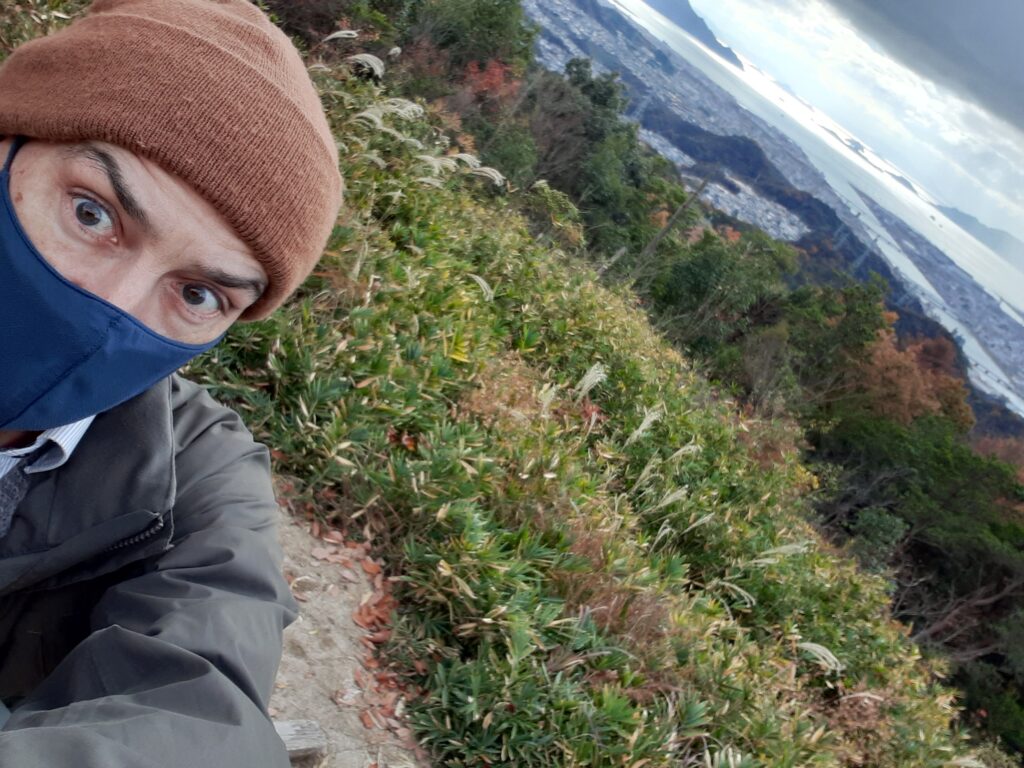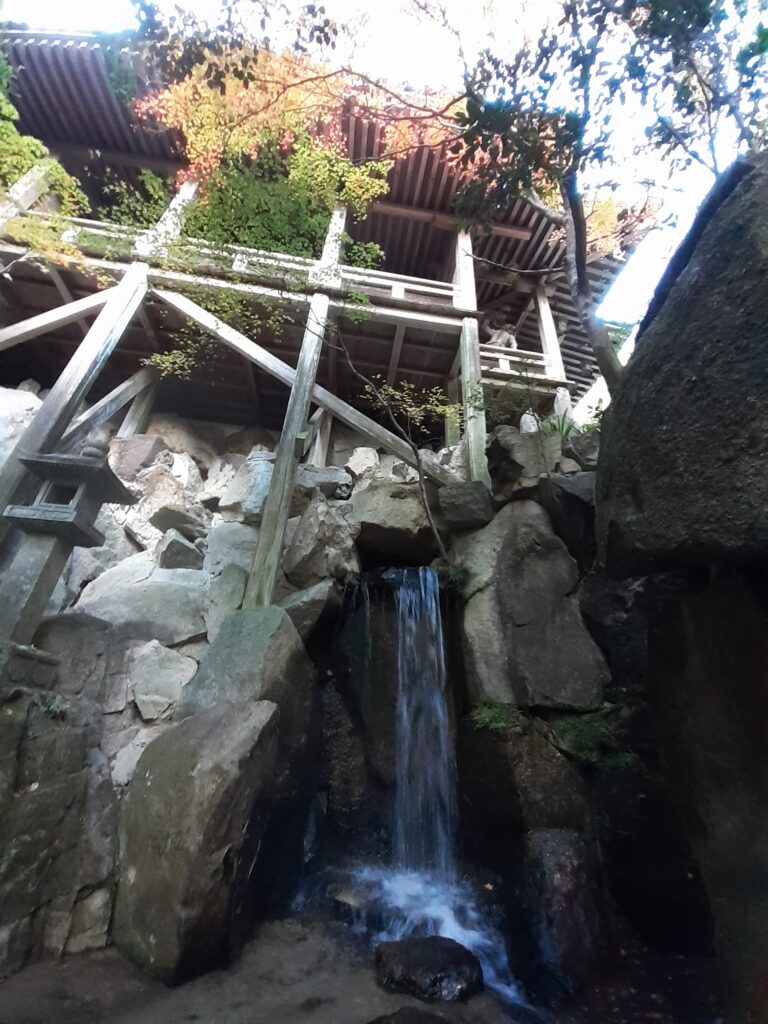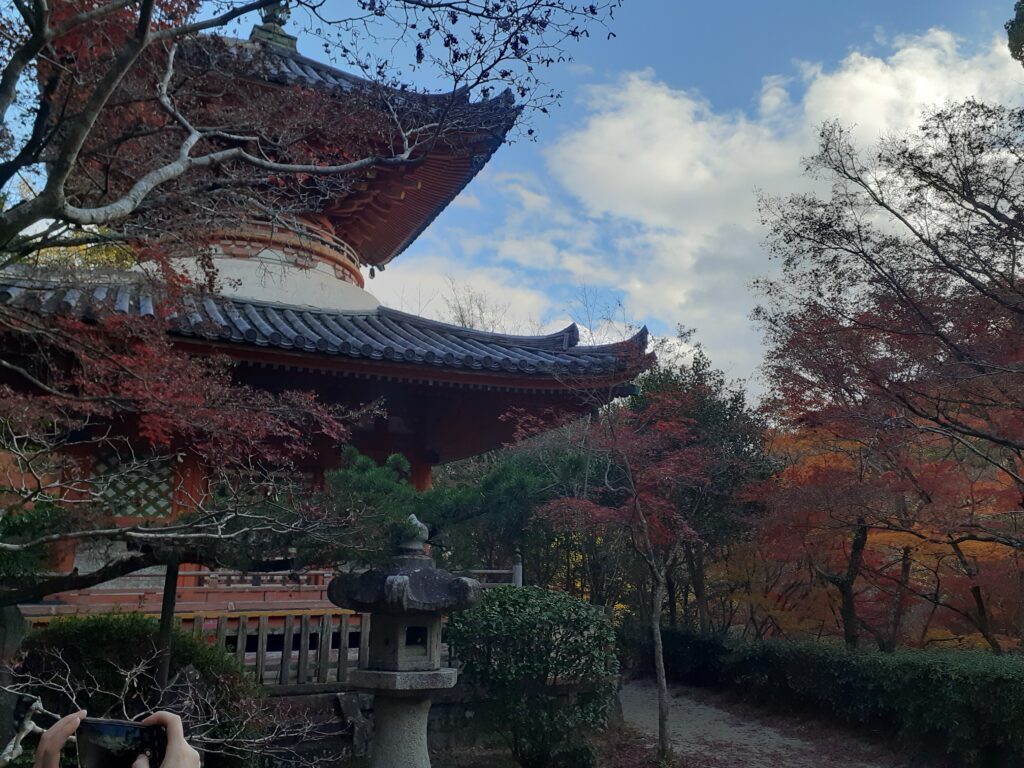
Last Tuesday was a national holiday (Labour Thanksgiving Day) in Japan and so I took the opportunity to go for a stroll up Mount Mitaki, one of the hidden gems on the outskirts of Hiroshima.
The peak of Mount Mitaki is only around 350 metres high so it’s not too taxing a hike up to the top.
On your way you will pass various temples belonging to the Shingon Buddhist sect as well as numerous statues. The Shingon temple was founded in the 9th century AD, so its formation dates right back to the early years of the Shingon sect itself, which is one of the oldest forms of Japanese Buddhism.
One enjoyable feature of the shrine complex is the array of little “jizo” statues, many capped with red knitted beany hats!
Jizo = 地蔵 = “earth womb”. Such statues are guardian deities of travellers and the spirits of dead children including those that die in the womb as well as aborted foeti.
By the way, did you notice that the sleeping fellow (in the photo above) doesn’t have a hat? As John Bunyon wrote, “He that sleeps is a loser.”
Not far beyond the jizo statues there is a small pond behind which stand the four great founders of Buddhist sects. I recognized two of them.
The one on the left is Kobo Daishi, founder of the Shingon sect of Buddhism, and a fellow with a remarkable talent for discovering hot springs on his perigrinations around Japan.
To his right stands the stern figure of Nichiren, founder of – would you believe it? – the Nichiren sect of Buddhism. Nichiren also wandered around Japan but had very little success in discovering hot springs.
Nevertheless, Nichiren’s form of Buddhism offers a nice easy path to salvation; one merely has to chant “Namu myoho renge kyo” (“Glory to the Dharma of the Lotus Sutra”) to be assured of it.
A follower of the Shingon sect is more likely to chant “Namu Amida Butsu” (“Glory to Amida Buddha”). Perhaps that is what this trinity of jizo statues are chanting in their niche. Certainly the middle fellow seems to have achived quite an advanced state of enlightenment, if not the other two, who are still struggling with this-worldly sartorial issues.
Once you get beyond the temple complex the path takes you through a bamboo forest, beyond which, after another climb, you begin to catch some glimpses of the city and the Inland Sea beyond it.
Wait a minute! What are those teddy bears doing hanging from that tree?
Another look will reveal that they are not all bears! There is a panda, a dog and a Pikachu among other things. What on earth does a tree of hanged soft toys signify? Or is it intended to make our flesh creep, or merely to amuse us?
After surviving the shock of the hanged bears et al, I made it to the summit and was rewarded with another fine view of Hiroshima city.
The temple complex was less crowded by the time I made my way back down to it and so I was able to take this photo of the main temple, which was built over one of the three waterfalls that the name “Mitaki” (三瀧 = three + waterfall) alludes to. The Shingon priests were chanting a sutra in the temple when I took the photo.
My last stop before leaving Mitaki Temple was the two storied pagoda. The pagoda was not originally built at Mitaki Temple. It used to be in the grounds of Hiro-Hachiman-jinja, a Shinto shrine in Wakayama Prefecture, but was taken down and moved to Mitaki in 1951 for the repose of the souls of the victims of the atomic bomb.
Two storied pagodas are associated with Shingon Buddhism so it is interesting to note that the pagoda was originally built at a Shinto shrine. Shinto is the “indigenous” religion of the Japanese, but the arrival of Buddhism in the 9th century led to a syncretic relationship between the two religions. There is even a word for the merging of the two religions in Japanese: “Shinbutsu-shūgō” (神仏習合 = kami [gods] + buddha + syncretism”).

